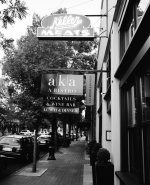TareqPhoto
The Survivor
There isn't "a development time" for 1600 or another one for 3200: it depends on the contrast you want on your negatives, and that depends also on the real scene's contrast. Every photographer must find the best times for his/her gear and ways of metering and developing... Recommended times are given to start testing...
When you shoot a film at 3200, you give it less light than when you shoot it at 1600, so at 3200 you should develop it (as it received less light) for more minutes than you do at 1600...
Cheers,
Juan
i was asking that if i shoot it at 1600, then should i develop it for 1600 or develop it for 3200? i think each has certain time, but i have to start somewhere anyway, so if i will develop at 1600 then i will try the given time and go from there, if i develop as 3200 also i have to check the given or starting recommended time and go from there, i can't just pick anytime from my head and do it, it may work or may not but it is always better for me as a beginner to start with the manufacturer's time given and then see if the results are matching my expectations or not, and about contrast or so in fact i don't give contrast or grain much interest, i care just to get the pic out of the rolls, and i do scan, with scanning i can tweak sharpness a bit and also contrast.





